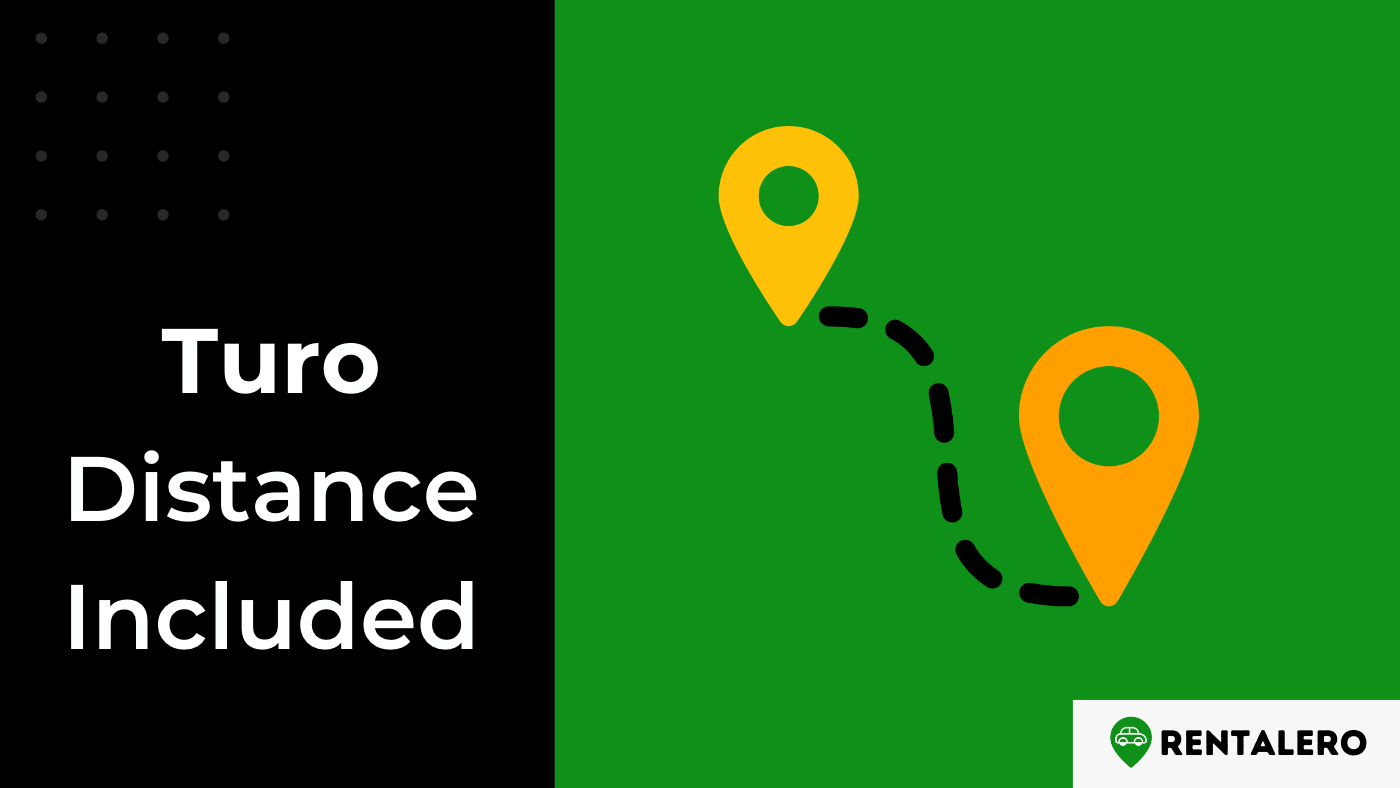Ah, the open road!
There’s nothing quite like the freedom of cruising in a car you rented through Turo. But as you plan your next epic road trip, you might be scratching your head, wondering: “What does “distance included” mean on Turo?”
Worry not, dear adventurer!
In this article, we’ll demystify the concept of “distance included” on Turo and help you understand how it affects your rental experience. We’ll also provide valuable tips on maximizing your allotted distance while enjoying your Turo ride.
Advertising links are marked with *. We receive a small commission on sales, nothing changes for you.
Key Takeaways
- Car owners set the distance limits on Turo, typically providing a minimum of 200 miles daily.
- Exceeding the distance limit results in overage fees, determined by the car owner.
- To adjust the distance limit, communicate with the car owner and negotiate a mutually beneficial agreement.
- Staying within mileage limits helps avoid extra charges and ensures a cost-effective Turo experience.
- Open communication and consideration for both parties lead to a smooth and hassle-free car rental.
Setting and Understanding Distance Limits
In this section, we’ll explore how car owners set distance limits, the factors that influence these limits, and the minimum distance limits on Turo.
How Car Owners Set Distance Limits
Car owners on Turo can set their distance limits for renters.
This flexibility allows them to maintain control over their vehicle’s usage, balancing the needs of renters with the owner’s preferences. Here’s how they do it:
Listing creation:
When creating a listing, car owners specify the distance limits for daily, weekly, and monthly rentals.
Customization:
Owners can choose different limits for each rental period, tailoring their offering to suit various renter needs.
Updates:
As circumstances change, car owners can adjust distance limits by updating their listing details.
Factors Affecting Distance Limits
Various factors can influence a car owner’s decision on distance limits. Here are some of the most common considerations:
Vehicle wear and tear:
More miles driven may lead to increased maintenance costs and accelerated depreciation. To mitigate these effects, car owners may set lower distance limits.
Insurance coverage:
Insurance policies may have specific limitations on the number of miles driven. Therefore, car owners need to ensure their distance limits align with their insurance requirements.
Availability:
Owners who rely on their vehicle for personal use may set stricter distance limits to ensure its availability when needed.
Competitiveness:
Some car owners may offer more generous distance limits than similar listings to attract more renters.
Target audience:
Owners might tailor distance limits to the needs of their target renters, such as by offering higher limits for business travelers or vacationers who may require more flexibility.
Minimum Distance Limits (200 Miles Per Day)
Turo recommends a minimum distance limit of 200 miles per day. However, car owners can set their own limits based on their preferences and unique circumstances. Here’s why the 200-mile daily minimum is popular:
Balancing owner and renter needs:
A 200-mile daily limit balances the car owner’s desire to preserve their vehicle and the renter’s need for a reasonable driving allowance.
Competitive edge:
Offering a minimum of 200 miles per day can make a listing more attractive to potential renters, increasing the chances of securing bookings.
Flexibility:
Renters often appreciate having ample miles, which allows them to explore without worrying about exceeding the limit.
However, it’s essential to remember that each car owner has the autonomy to set their own distance limits. So, when browsing Turo listings, check the specific distance limits of each vehicle to avoid surprises and find the best fit for your needs.
Consequences of Exceeding “Distance Included”
This section will discuss the consequences of going beyond the distance limit, how overage fees are calculated, and the potential impact on your car rental experience.
Overage Fees
You’ll face overage fees when you drive beyond the distance included in your Turo rental agreement.
These additional charges help car owners compensate for their vehicles’ extra wear and tear. Here’s what you need to know about overage fees:
Agreement terms:
Overage fees are specified in the rental agreement, which you accept when booking a vehicle on Turo.
Invoicing:
These fees are typically billed after your trip ends, and Turo reviews the total distance driven.
Payment method:
Overage fees are charged to the payment method you provided when booking your rental.
How Overage Fees Are Calculated
To avoid any surprises, it’s essential to understand how overage fees are calculated. Here’s a breakdown of the process:
- Car owners set the overage rate in cents per mile or kilometer.
- At the end of your trip, Turo calculates the total distance driven by comparing the odometer readings at the start and end of your rental period.
- If the total distance driven exceeds the included limit, Turo calculates the excess distance by subtracting the allowed distance from the actual distance.
- To calculate the total overage fee, Turo multiplies the excess distance by the overage fee rate that the car owner has specified.
Potential Impact on Car Rental Experience
Going beyond the included distance can affect your car rental experience in several ways. Here’s how it can impact both renters and car owners:
Renters:
Increased costs:
Overage fees can add up quickly, leading to a more expensive rental experience than initially anticipated.
Budget management:
Unexpected fees can throw your travel budget off balance, forcing you to adjust your spending plans.
Rental reputation:
Repeatedly exceeding distance limits may impact your reputation as a renter, making it harder to secure future rentals on Turo.
Car Owners:
Vehicle wear and tear:
The excess distance can increase maintenance costs and accelerate car depreciation.
Insurance implications:
Exceeding distance limits may lead to insurance complications if the vehicle is involved in an accident or requires repairs.
User satisfaction:
Car owners may face unhappy renters if they feel the distance limits are unclear or unreasonable.
Adjusting Distance Limits on Turo
This section will cover when and why adjustments may be necessary, how to request them, and some tips for successful negotiations with car owners.
When and Why Adjustments May Be Necessary
There are several scenarios where adjusting distance limits may be beneficial for both renters and car owners:
Extended trips:
If your journey takes you further than initially planned, requesting an increased distance limit can help you avoid overage fees.
Shortened trips:
Conversely, a reduced distance limit may result in a lower rental cost if your trip ends up shorter than expected.
Special occasions:
Events like road trips, weddings, or family vacations may require additional miles to accommodate your plans.
Unexpected detours:
Sometimes, unforeseen circumstances (e.g., road closures, weather conditions) force you to take a longer route, necessitating an adjustment to the distance limit.
How to Request Adjustments
If you need to adjust the distance limit on your Turo rental, follow these steps:
Open communication:
Reach out to the car owner when you realize you must adjust the distance limit. It’s essential to keep the lines of communication open and maintain a friendly, respectful tone.
Explain your situation:
Explain your reasons for needing an adjustment and provide any necessary details (e.g., how many extra miles you need, why your plans changed).
Be flexible:
Understand that car owners may have their own reasons for setting specific distance limits and may not always be able to accommodate your request. Be open to alternative solutions or compromises.
Confirm the adjustment:
If the car owner agrees to adjust the distance limit, confirm the new terms in writing (e.g., through the Turo messaging system) to avoid misunderstandings later.
Conclusion
Now that you better understand what “distance included” means on Turo, you’re ready to hit the road confidently!
Remember to stay within your mileage limits to avoid extra charges and communicate openly with car owners if you need to make any adjustments. Being responsible and considerate gives you a cost-effective and hassle-free Turo experience that gets you where you need to go.
Frequently Asked Questions
How is “distance included” calculated?
The “distance included” in your Turo rental refers to the miles you can drive during your trip without incurring extra fees. Car owners set the distance limits, usually offering a minimum of 200 miles daily. Some owners might offer more miles, while others may opt for a weekly or monthly mileage limit.
What happens if you exceed the distance included?
You’ll be charged an overage fee if you go over the distance limit during your Turo rental. The car owner determines this fee, usually between $0.10 and $0.75 per mile.
Can you adjust the distance limit on Turo?
Yes, you can request an adjustment to the distance limit on your Turo rental.

Nzoputa has been writing for Rentalero since day one and is one of our most experienced members when it comes to the rental industry. For her, nothing beats Uber!
Advertising links are marked with *. We receive a small commission on sales, nothing changes for you.

